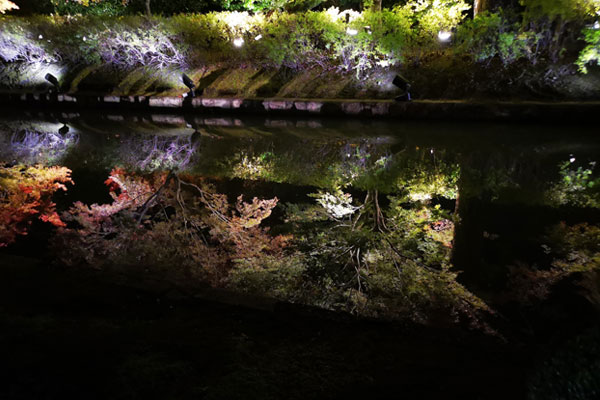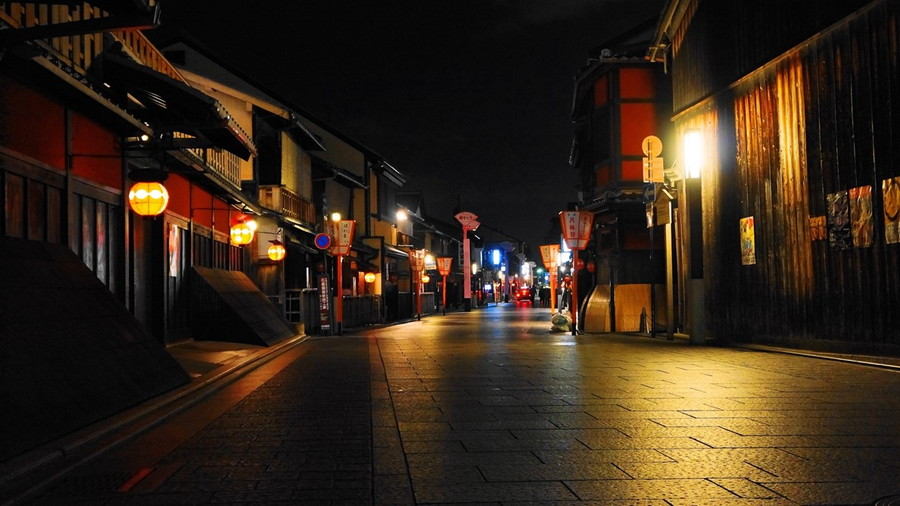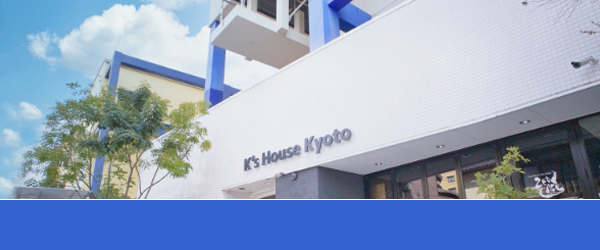Great Night Worship & Views, Projection Mapping – lightning-up in Kyoto
Unlike the daytime appearance, the nighttime appearance also transforms into another traditional atmosphere, and Kyoto at night shines with fantastic beauty and brilliance that makes you feel as if you are in another world.
We would like to introduce shrines, temples, where light-up events are taken place, and other sightseeing spots that you should go at night.
※Please note that a special nighttime admission fee for the night visit event is needed for some of the shrines and temples apart from the daytime admission fee.
Also, flying drones in the sky of Kyoto city is strictly prohibited, and aerial photography and flights of drones without permission and certification are subject to punishment.
About a flight rule of an unattended airplane (drone radio control)
※Eye Catch, source:https://photo53.com/kyoto-yakei.php
2023.November Autumn Leaves Latest Information
Kiyomizu Temple
- Date:11.18~11.30
- Hours:17:30~20:30
- Fee:400JPY
Eikando
- Date:11.3~12.3
- Hours:17:30~20:30
- Fee:600JPY
Toji Temple
- Date:11.1~12.10
- Hours:18:00~21:00
- Fee:1000JPY
Kitano Tenmangu Shrine
- Date:11.11~12.3
- Hours:日の入り~19:30
- Fee:1200JPY
Toji









Toji temple, is five-storied pagoda, has been built in 796 after relocation of the capital called Heiankyo and the temple remains almost the same as it was when it was built.
A fantastic view of the temple makes you feel as if you have traveled back in time to Heiankyo period.
Also, during the spring and autumn leaves season, they have a special nighttime visit, and with the size of Toji temple, there is no doubt that you will be overwhelmed by the scenery of Somei-Yoshino, a type of tree of cherry blossoms, and autumn leaves.

Information of Toji temple
Official website(only Japanese):World Heritage Toji
Nearest bus stop : Toji Minamimon-mae(Toji southern gate) from JR Kyoto station by city bus No.78 or 19
※Special nighttime admission fee for the night visit event is needed apart from the daytime admission fee
NIjo Castle

The Nijo castle was used as a court and lodging in the Edo period, and was registered as UNESCO “Historic Monuments of Ancient Kyoto” in 1994.
Indeed, the illumination of cherry blossom trees and autumn leaves is beautiful, but the feature of the illumination of Nijo Castle is that it uses projection mapping.
In collaboration with the creative production named “NAKED”, the castle was colored with light art with various themes such as cherry blossoms in spring, autumn leaves and pampas grass ears in autumn, fireworks, soap bubbles, Kaleidoscope and even Japanese Specter.
The Nijo castle has a different world that you cannot think of as a castle.


Information of Nijo Castel
Official website: World Heritage Site Nijo-jo Castle
Opening hors and fee: General Information
Access: Access
Event: Events
※Special nighttime admission fee for the night visit event is needed apart from the daytime admission fee.
Yasaka Shrine
Yasaka shrine is the headquarter of the faction of Yasaka shrines all over Japan, and is called “Gion-san”. Calling someone or something with “-san”, as honorific title, means that familiarity is attached to it.
The magnificent vermilion gates called Nishi-rou-mon and the ritual stage with plenty of lanterns are lit up at night, the shrines are still powerful and majestic even though the shrine is surrounded main streets and modern buildings.
This shrine is highly recommended because there is no admission fee and curfew for the shrine, so it is available anytime.


Information of Yasaka Shrine
Official website: History of Yasaka Shrine
Access: Access
Chion-in temple
Chion-in is featured with the giant gate called San-mon, long stairs with 51 steps called Otoko-zaka toward the main fall of the temple called Miei-dou. Their religion is Jodo sect (Pure Land Buddhism) and this temple is the headquarter of the Pure land Buddhism temple in Japan.
There is another route, called Onna-zaka, where its slope is gentle, and it leads you to the main hall as well.
During the special nighttime opening, you will have an opportunity to listen to wisdom story by monks there, to hit a mokugyo, a fish-shaped wooden drum used for Buddhism chants, and to have a special tour with the monks.
The giant gate called San-mon was lit up with blue light in order to encourage health care workers in 2020.

Their nighttime events use projection mapping for whole area of the temple, you can enjoy the events from the beginning to the end.
After coming though the giant gate, the long stairs lit up by the projection mapping.


Information of Chion-in
Official website: CION-IN
Opening hours and fee: Guide
Access: Access
Events: Event schedule
※Special nighttime admission fee for the night visit event is needed apart from the daytime admission fee.
Ninen-Zaka, Sannnen-Zaka and Yasaka Pagoda
Ninen-zaka and Sannnen-Zaka are long stairs in Higashiyama area, where there are a lot of traditional souvenir shops opening in the daytime. It is very famous to wander around the area with Kimono or Yukata style (Japanese traditional close culture)
Such lively approach also transforms into a place that gives off a different charm at night.
Ninen-Zaka is famous for those 3 Japanese umbrella called Wa-gasa(和傘).

The Sannen-Zaka and the Shidare-Zakura cherry blossoms(a type of cherry blossom tree).

Great view of the Yasaka Pagoda

Information of Ninnen-Zaka, Sannen-Zaka and Yasaka pagoda
Nearest bus stop: Gojo-zaka bus stop by Kyoto city bus No.206 or 86, then go up a slope called Gojo-Zaka. You will find first Sannen-Zaka, then Ninen-Zaka and Yasaka Pagoda in order.
Kiyomizu temple
Kiyomizu temple is one of the best temples in Kyoto, which is famous for “the stage of Kiyomizu”, and is registered as one of the World Heritage Sites “Historic Monuments of Ancient Kyoto”.
Also this temple is well-known as where “Kanji of the year” that expresses the whole year with one character of Kanji by the monk from the Kiyomizu temple.
Kiyomizu-temple’s special nighttime opening event are held three times in spring, summer, and autumn, so you can enjoy different faces in each one of the season.
The light emitted from Kiyomizu-dera is divine, and the harmony with the historical buildings is wonderful.


The stage of Kiyomizu temple with autumn leaves and the shine.

Information of Kiyomizu temple
Official website: Kiyomizu-dera Temple
Access: Location
※Since the special nighttime opening hour is extended from the regular viewing time, the admission fee is needed to pay only once.
Fushimi Inari taisha shrine
Fushimi Inari Taisha Shrine, which is famous for Senbon Torii(thousand of gates), has been built in 711. Praying at the shrine benefits you of prosperous business and family safety.
It is the headquarter shrine of Inari shrine group, which has about 30,000 companies nationwide, and is one of the best power spots in Japan, and many people visit it at the beginning of the New Year.
Around the main gate called Rou-mon, two statues of fox are enshrined. The more you walk into the area, the more you can meet the fox everywhere who is the messenger of the god of Inari.
By the way, Ema (絵馬:message wooden board to writes your wish to send them to the God) is also very unique because it imitates the face of a fox.

The original belief in worshiping the Inari Shrine is to walk around the entire mountain where the main shrine is enshrined, but many people come back around the area called Mitsutsuji or Yotsutsuji on the halfway to the top.
It takes about 2 hours to walk around the whole area of the shrine
In the nighttime, it is completely different atmosphere from the daytime around the shrine and the mountain, so you may feel a little bit thrilling and spooky but the area attracts visitors by another kind of beauty of the night.

Information of Fushimi Inari shrine
Official website: Fushimi Inari Taisha
Access: Access
Kamogawa and Kawa-doko
Kawa-doko(or Kawa-yuka), which is famous as one of the summer traditions of Kyoto, is also called Noryo-Yuka, and is a traditional Kyoto culture that has continued since the Edo period (was restricted during the Pacific War period).
Currently, along the Misosogi River where flows just to the west of the Kamo River, the floors that stick out from restaurants are lined up from the vicinity of Nijo Ohashi in the north to the vicinity of Gojo Ohashi in the south.
Just looking at the view of the Kawa-doko floors from the Kamo River side is a wonderful but it is much worth having dinner on Kawa-doko floor and looking down the river view.
This Noryo Yuka period starts from 1st May and ends 30th September. ※This Noryo Yuka was held between 1st May to 31st October in 2021 as the association extended the period.

Information of Kamo rive and Kamogawa Noryo Yuka
Official website:Kamogawa Nouryou-Yuka
Nearest station and bus stop:
Shijo-Keihan-mae bus stop (city bus)
Gion-shijo st (Keihan railway)
Kawaramachi st (Hankyu railway)
Hanamikoji Dori
Hanamikoji dori is a street lined with good old Kyomachiya(京町屋:traditional Japanese house architecture ) in Kyoto, which is characterized by Bengara-Koshi(紅殻格子: a red shell lattice) and Inuyarai(犬矢来: The fence under the eaves of the dog guard).
Also stone pavement street create a more tasteful atmosphere.

In May 2021, the stone pavement was temporarily removed, and asphalt was laid for the water pipe construction, but it will return to the stone pavement as soon as the construction is completed from around April 2022.
There are many Ochaya(お茶屋: a place where guests enjoy their meal with Geiko and Maiko performers) near this street, and if you are lucky, you may see Geiko and Maiko heading to the Ochaya.
※Please note that taking pictures on private roads other than Hanamikoji-dori, talking to Geiko and Maiko, or taking pictures without permission is strictly prohibited and will be subject to fines.
Information of Hanamikoji Dori
Nearest station and bus stop:
Shijo-Keihan-mae bus stop (city bus)
Gion-shijo st (Keihan railway)
Kawaramachi st (Hankyu railway)
Gion Shirakawa river
Gion Shirakawa river is located east of Gion Shijo. It is not a big area, but the area is fulfilled with a lot of charm of Kyoto tradition and it is a place where you can have it all of the Kyoto tradition at once.
The area shows various changes such as cherry blossoms in spring, fresh green in summer, autumn leaves of ginkgo and zelkova in autumn, and snow makeup in winter. Many people wear Kimono and Yukata and take a walk while enjoying the seasons and atmosphere.
Tatsumi Daimyojin shrine

Information of Gion Shirakawa river
Access:
5 minutes walk from Gion bus stop (city bus)
5 minutes walk from Gion-shijo st (Keihan railway)
8 minutes walk from Kawaramachi st(Hankyu railway)
Miyagawa-cho
Kyoto’s Hanamachi “Miyagawa-cho” is one of Kyoto Gokagai(京都五花街: a general terms of five Intangible cultural heritage town in Kyoto) of Kyoto, and the Miyagawa-cho is where the history and culture that has been nurtured and developed together with Kabuki, Geiko and Maiko. Various events are held throughout the year, so if you are interested, why not take a look at the art of Kyoto.
In addition, it is designated as a landscape conservation area, and it is a town that retains the old-fashioned atmosphere. After the sunset, not only the streetlights but also the lanterns attached to the front entrance shine dimly, which is breathtakingly beautiful.
Lanterns shine at night in Miyagawa-cho.

Information of Miyagawa-cho
Official Site:KYOTO Miyagawacho
Access:
1 minute on foot from Kawaramachi Matsubara bus stop (city bus)
1 minute on foot from Kiyomizu Gojo st (Keihan railway)
5 minutes on foot from Kawaramachi st (Hankyu railway)
Comfortable accommodation for budget travelers in Kyoto.
『K’s House』 Your home away from home.
Affordable, convenient, comfortable & friendly Hostels across Japan.
K’s House Kyoto is the first of K’s House hostels which has a variety of rooms and well equipped facilities are suitable for independent travelers as well as families and groups.
Voted No.1 Hostel in Asia & Japan 2013
● K’s House Kyoto

Kyoto and Hida Takayama vacation rentals
● K’s Villa Kyoto and Takayama









